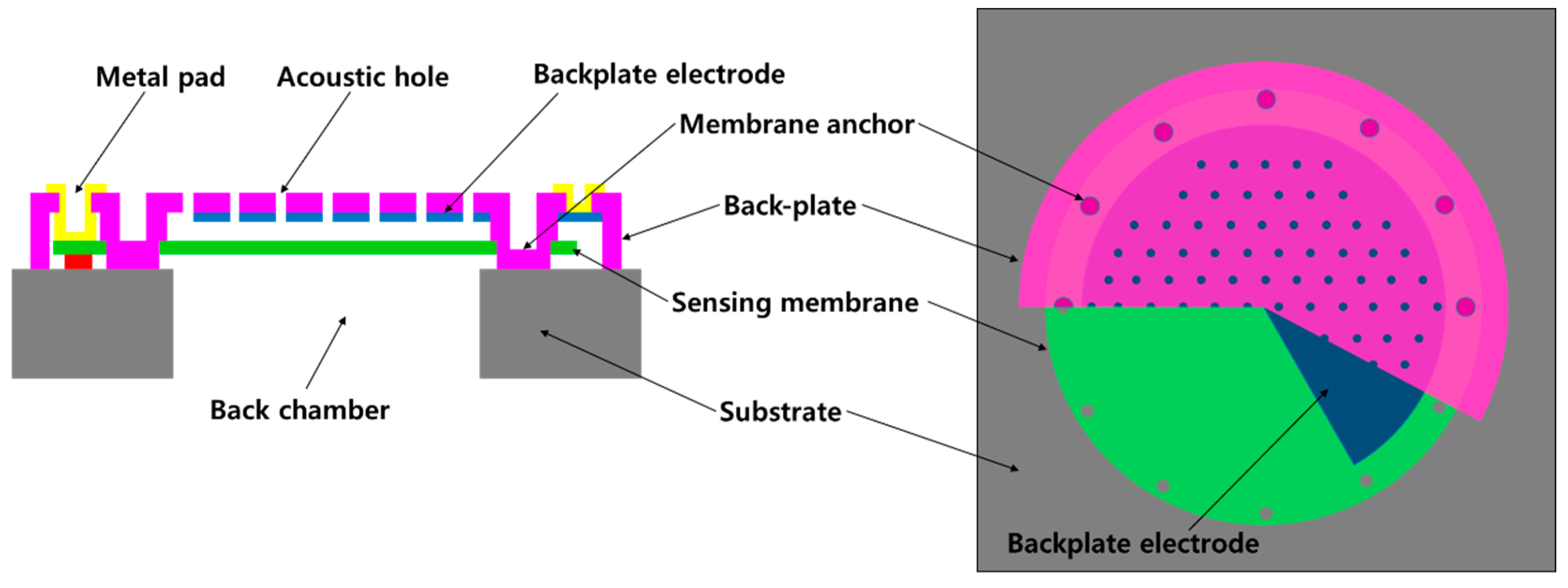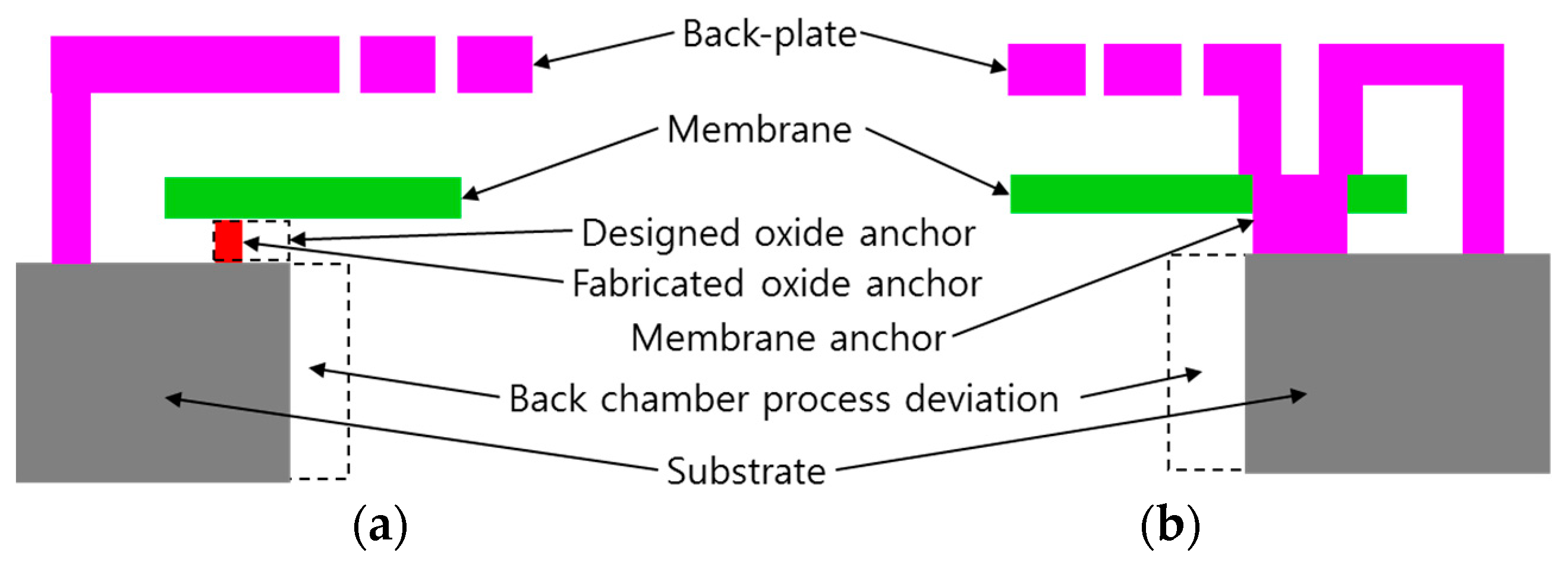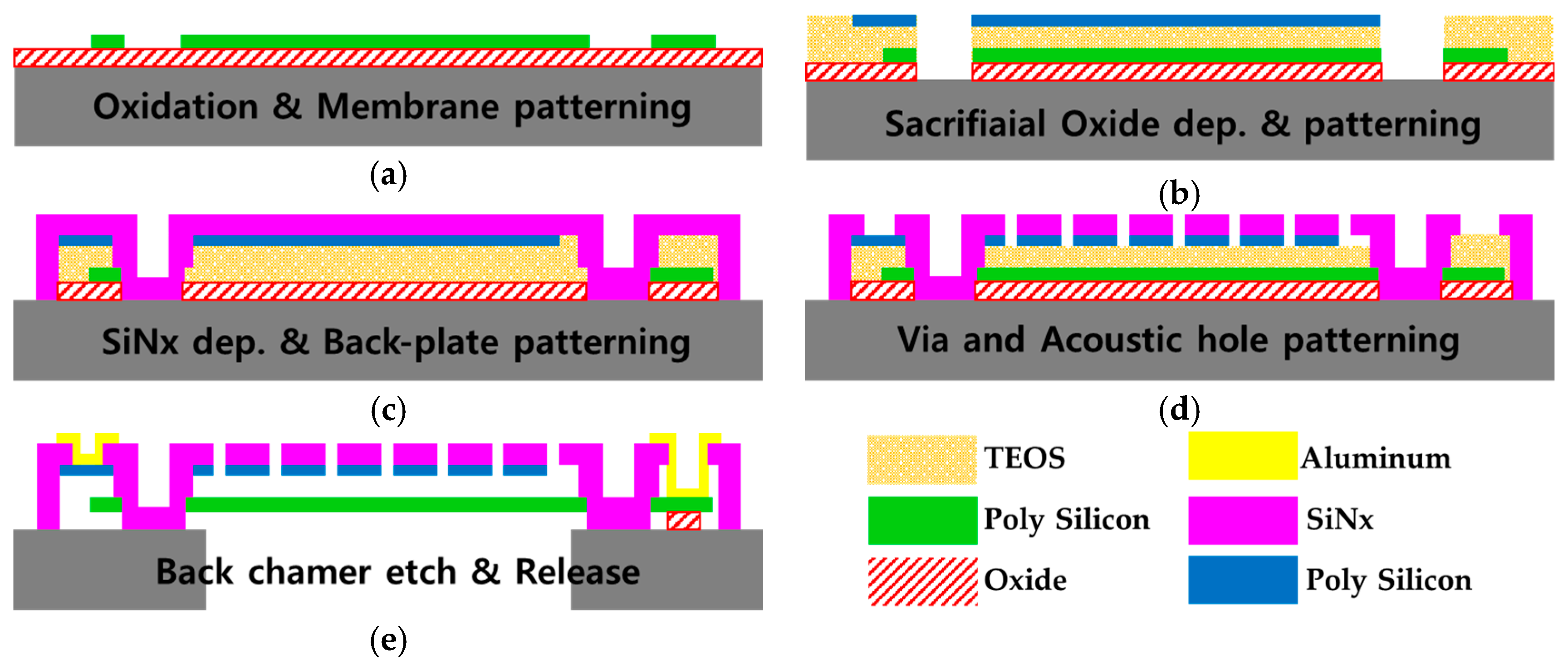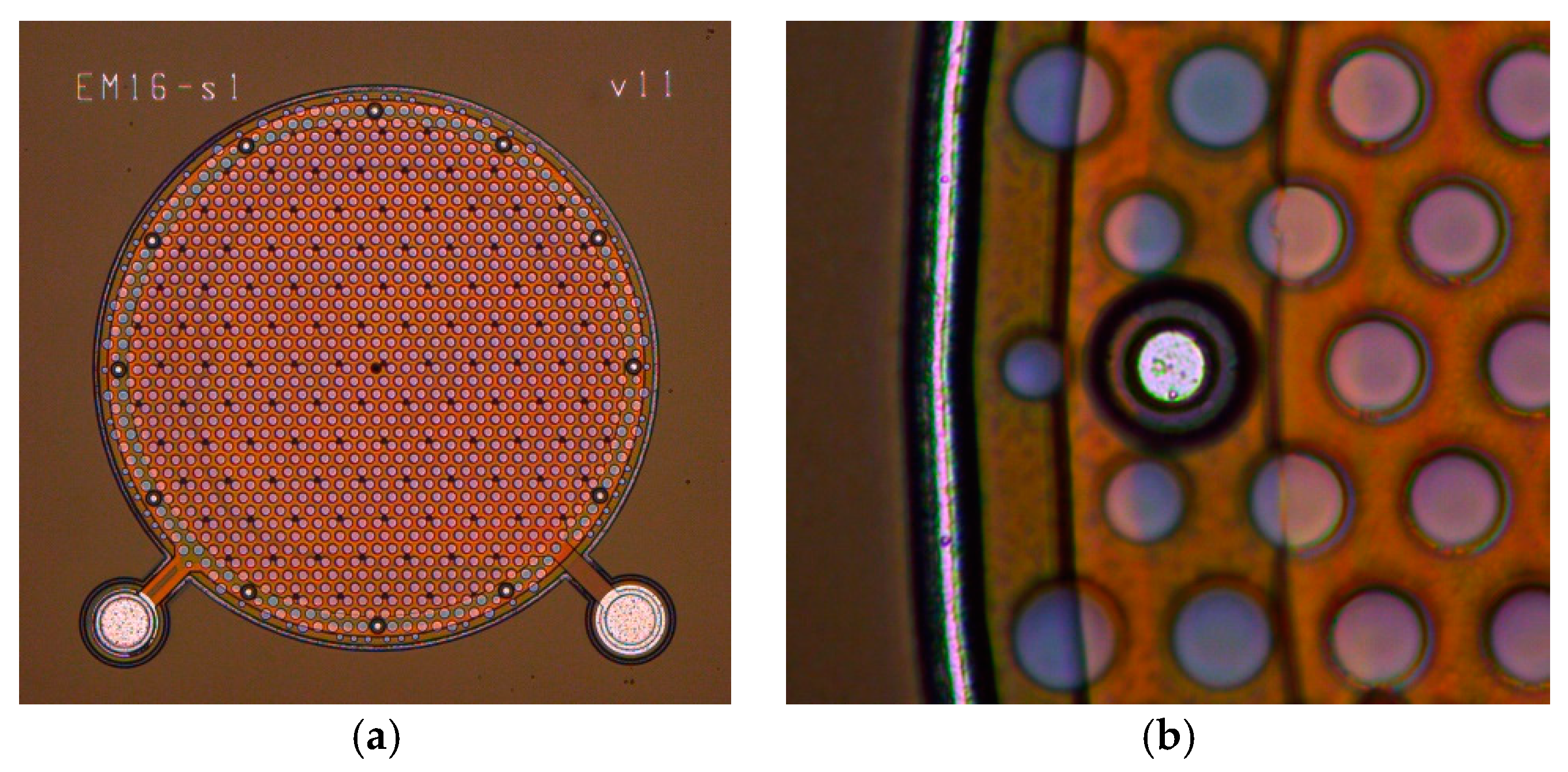MEMS Capacitive Microphone with Dual-Anchored Membrane †
Abstract
:1. Introduction
2. Theoretical Analysis
3. Device Design and Fabrication
4. Experimental Results
5. Conclusions
Acknowledgments
Conflicts of Interest
References
- Lee, J.; Je, C.H.; Yang, W.S.; Kim, Y.G.; Cho, M.H.; Kim, J. Thin MEMS microphone based on package-integrated fabrication process. Electron. Lett. 2012, 48, 866–867. [Google Scholar] [CrossRef]
- Leinenbach, C.; Teeffelen, K.; Laermer, F.; Seidel, H. A new capacitive type MEMS microphone. In Proceedings of the International Conference on Micro Electro Mechanical System (MEMS), Hong Kong, 24–28 January 2010; pp. 659–662. [Google Scholar]
- Weigold, J.W.; Brosnihan, T.J.; Bergeron, J.; Zhang, X. A MEMS Condenser Microphone for Consumer Applications. In Proceedings of the International Conference on Micro Electro Mechanical System (MEMS), Istanbul, Turkey, 22–26 January 2006; pp. 86–89. [Google Scholar]
- Chan, C.-K.; Lai, W.-C.; Wu, M.; Wang, M.-Y.; Fang, W. Design and implementation of a capacitive-type microphone with rigid diaphragm and flexible spring using the two poly silicon micromachining processes. IEEE Sens. J. 2011, 11, 2365–2371. [Google Scholar] [CrossRef]
- Je, C.H.; Lee, J.; Yang, W.S.; Kim, J.; Cho, Y.-H. A surface-micromachined capacitive microphone with improved sensitivity. J. Micromech. Microeng. 2013, 23, 1–7. [Google Scholar] [CrossRef]





| Membrane Radius (μm) | Resonant Frequency (kHz) | % error | Pull-in Voltage (V) | % error | |
|---|---|---|---|---|---|
| Under etched | 245 | 32.92 | −4.14 | 6.51 | 4.12 |
| Designed | 250 | 31.61 | - | 6.25 | - |
| Over etched | 255 | 30.38 | 3.89 | 6.01 | −3.88 |
| Dual-anchored | 250 | 29.10 | - | 6.24 | −0.14 |
| Parameter | Membrane | Anchor | Back-Plate Thickness | Air Gap | ||
|---|---|---|---|---|---|---|
| Diameter | Thickness | Diameter | # | |||
| μm | ||||||
| values | 500 | 0.5 | 15.0 | 12 | 2.3 | 2.0 |
| Parameter | Units | Designed | Measured | % Deviation |
|---|---|---|---|---|
| Pull-in voltage | V | 6.24 | 6.55 ± 0.2 | 2.9 |
| Capacitance | pF | 0.76 | 0.86 ± 0.02 | 2.4 |
| Resonant frequency | kHz | 29.1 | 36.3 ± 1.3 | 3.6 |
| Sensitivity (open circuit) | mV/Pa | 14.0 ± 0.8 | 5.7 |
Publisher’s Note: MDPI stays neutral with regard to jurisdictional claims in published maps and institutional affiliations. |
© 2017 by the authors. Licensee MDPI, Basel, Switzerland. This article is an open access article distributed under the terms and conditions of the Creative Commons Attribution (CC BY) license (https://creativecommons.org/licenses/by/4.0/).
Share and Cite
Je, C.H.; Jeon, J.H.; Lee, S.Q.; Yang, W.S. MEMS Capacitive Microphone with Dual-Anchored Membrane. Proceedings 2017, 1, 342. https://doi.org/10.3390/proceedings1040342
Je CH, Jeon JH, Lee SQ, Yang WS. MEMS Capacitive Microphone with Dual-Anchored Membrane. Proceedings. 2017; 1(4):342. https://doi.org/10.3390/proceedings1040342
Chicago/Turabian StyleJe, Chang Han, Ju Hyun Jeon, Sung Q. Lee, and Woo Seok Yang. 2017. "MEMS Capacitive Microphone with Dual-Anchored Membrane" Proceedings 1, no. 4: 342. https://doi.org/10.3390/proceedings1040342
APA StyleJe, C. H., Jeon, J. H., Lee, S. Q., & Yang, W. S. (2017). MEMS Capacitive Microphone with Dual-Anchored Membrane. Proceedings, 1(4), 342. https://doi.org/10.3390/proceedings1040342





